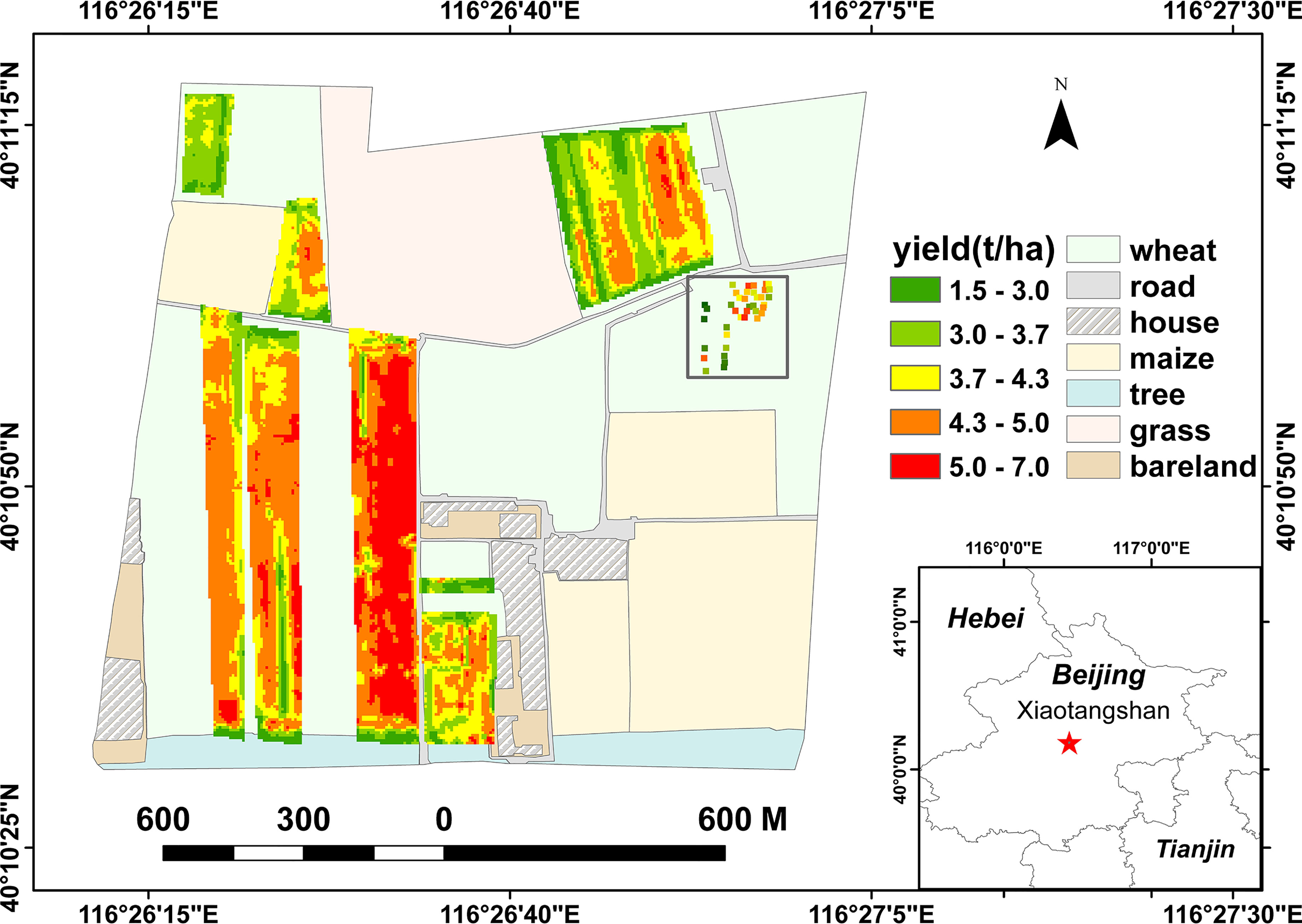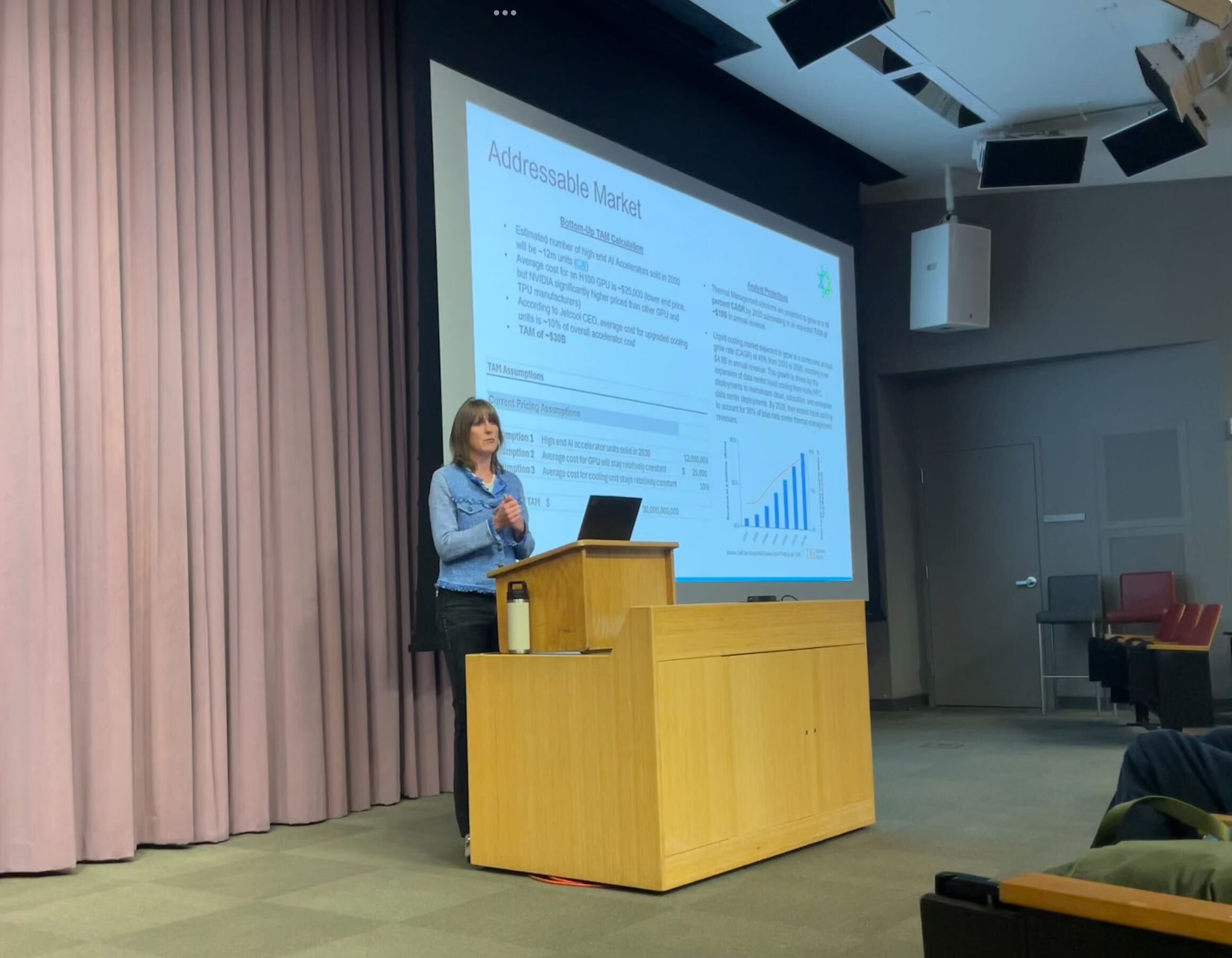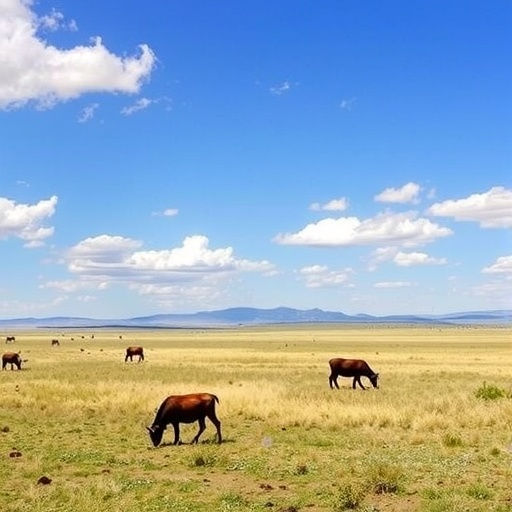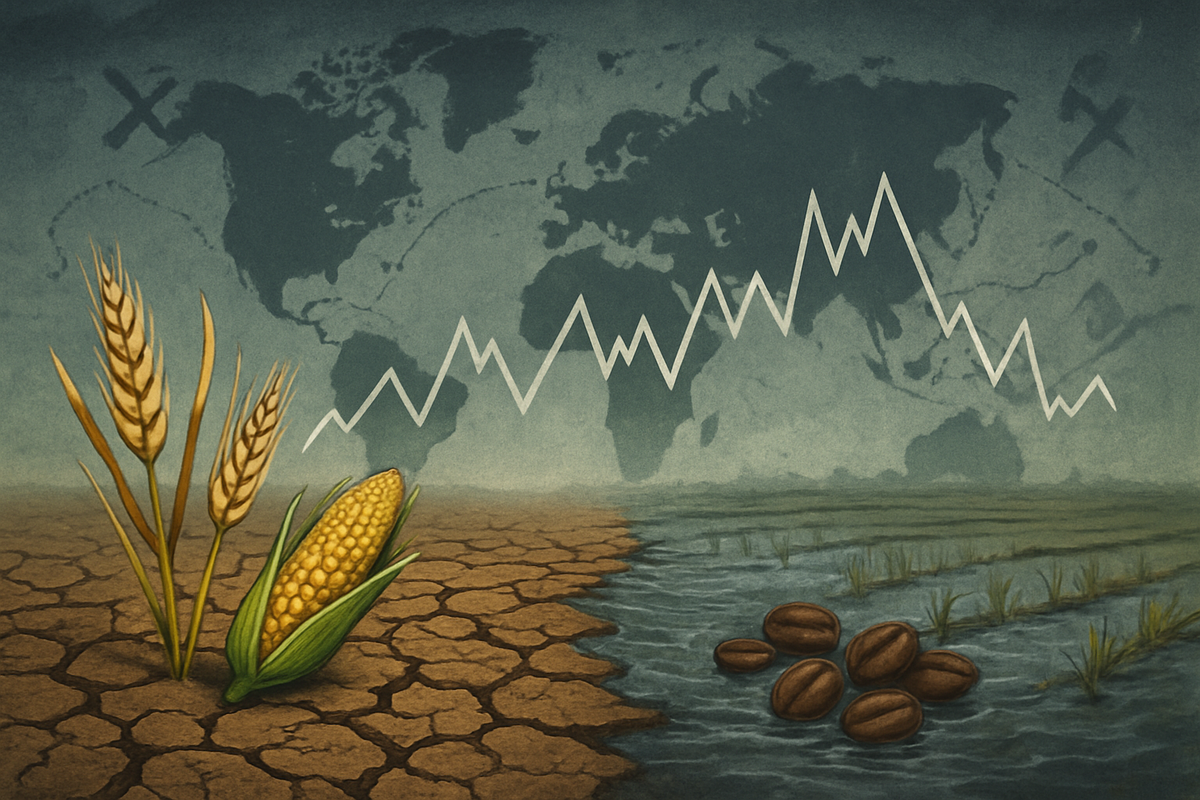Crop yield and water productivity modeling using nonlinear growth functions – Nature

Report on Sustainable Agricultural Modeling for Silage Maize Production
Executive Summary
This report details a study on the application of nonlinear growth models to enhance agricultural sustainability, directly addressing key Sustainable Development Goals (SDGs). The research was conducted in response to the urgent global challenges of food insecurity and water scarcity, which are central to SDG 2 (Zero Hunger) and SDG 6 (Clean Water and Sanitation). By employing Logistic and Gompertz models, the study aimed to predict silage maize yield and water productivity in arid and semi-arid regions, providing a scientific basis for optimizing resource use.
- The study successfully demonstrated that nonlinear models, using Growing Degree Days (GDD) as a predictor, can achieve high accuracy (R² > 99%) in simulating crop growth under various irrigation scenarios.
- These models serve as a powerful decision-support tool for precision irrigation, enabling farmers to maximize water productivity and contribute to the sustainable management of water resources as mandated by SDG 6.
- The findings provide a clear pathway for implementing data-driven farming practices that support SDG 12 (Responsible Consumption and Production) by improving resource efficiency.
- Ultimately, this research offers a practical and scalable solution to bolster agricultural resilience against climate change (SDG 13) in water-vulnerable regions, ensuring more stable food production systems.
Introduction: Aligning Agricultural Productivity with Sustainable Development Goals
The Global Imperative for Sustainable Water and Food Systems
Global water scarcity is a critical threat to sustainable development, with agriculture accounting for approximately 70% of all freshwater withdrawals. This over-extraction jeopardizes the achievement of multiple SDGs.
- SDG 6 (Clean Water and Sanitation): Inefficient irrigation practices deplete water resources and hinder efforts to ensure sustainable water management for all.
- SDG 2 (Zero Hunger): Water scarcity directly limits agricultural productivity, threatening food security for a growing global population, particularly in arid and semi-arid regions.
- SDG 12 (Responsible Consumption and Production): The current paradigm of agricultural production is often unsustainable. A transition toward more efficient use of natural resources like water is essential for establishing sustainable production patterns.
Innovative Modeling as a Tool for Sustainable Intensification
To address these interconnected challenges, this study explores the use of advanced crop growth modeling. Such models represent a critical innovation for sustainable agriculture, aligning with SDG 9 (Industry, Innovation, and Infrastructure).
- By providing accurate predictions of crop yield and water productivity, these models empower farmers and policymakers to make informed decisions that optimize resource allocation.
- This data-driven approach supports the goal of sustainable intensification—producing more food with fewer resources—which is fundamental to achieving SDG 2.
- Furthermore, by forecasting crop performance under different environmental conditions, these tools help manage agricultural risks and build resilience to climate change, a key target of SDG 13 (Climate Action).
Methodology: A Framework for Assessing Water-Use Efficiency
Experimental Design for Sustainable Irrigation Assessment
A field experiment was designed to evaluate silage maize growth under different water management strategies, with the explicit goal of identifying practices that support sustainable water use in line with SDG 6.
- Objective: To model the biological yield and water productivity of silage maize under varying levels of water availability.
- Irrigation Regimes: The experiment included three primary irrigation levels to simulate different water availability scenarios:
- Full Irrigation (W1): 100% of crop water requirement.
- Deficit Irrigation (W2 and W3): 80% and 60% of crop water requirement, respectively, to test water-saving strategies.
- Management Techniques: Continuous and pulsed irrigation methods were compared to determine the most efficient application technique for promoting responsible water consumption (SDG 12).
Analytical Models for Predicting Sustainable Outcomes
- Logistic and Gompertz Models: These nonlinear sigmoidal models were selected to simulate the dynamic, S-shaped curve of plant growth. Their parameters have direct biological interpretations, offering deeper insights into how water stress affects crop development.
- Growing Degree Days (GDD): GDD was used as the primary independent variable instead of time. This approach links crop growth directly to thermal energy accumulation, making the models more robust and applicable across different planting dates and climatic conditions, which is crucial for climate adaptation (SDG 13).
Key Performance Indicators for Sustainability
- Biological Yield: The total dry matter of the plant’s aerial organs was measured as a key indicator of agricultural productivity, directly relevant to achieving the food production targets of SDG 2.
- Crop Water Productivity (CWP): Calculated as the ratio of biological yield to the amount of irrigation water applied, CWP is a primary metric for assessing progress toward the water-use efficiency targets of SDG 6.
Results: Quantifying the Potential for Sustainable Maize Production
Model Performance in Predicting Biological Yield
The study confirmed the high efficacy of both the Logistic and Gompertz models in simulating the biological yield of silage maize. This provides a reliable scientific foundation for planning and management aimed at enhancing food security (SDG 2).
- Under both pulse and continuous irrigation, the models achieved an excellent fit with measured data, with coefficients of determination (R²) exceeding 0.99.
- The models accurately captured the S-shaped growth curve, including the initial slow growth, a rapid acceleration phase, and a final plateau as the crop reached maturity.
- This high level of accuracy demonstrates that these models are robust tools for predicting yield outcomes under different water management strategies.
Water Productivity and Contributions to SDG 6
The models were also highly effective in simulating Crop Water Productivity (CWP), providing critical insights for improving water management in agriculture.
- The relationship between GDD and CWP followed a clear sigmoidal pattern, indicating that water productivity increases rapidly during early growth stages before stabilizing.
- The results showed that deficit irrigation treatments (W2 and W3) led to higher CWP, highlighting a crucial trade-off between maximizing yield and maximizing water efficiency. This finding is vital for developing strategies that balance the objectives of SDG 2 and SDG 6.
- Under deficit conditions, continuous irrigation management resulted in better performance compared to pulse irrigation, offering a practical recommendation for farmers in water-scarce regions.
Discussion: Implications for Sustainable Agriculture and Policy
Advancing SDG 2 and SDG 6 Through Precision Irrigation
The findings underscore the sensitivity of maize yield to water availability and demonstrate that modeling can guide more sustainable irrigation practices. By predicting how crops will respond to different water levels, these models enable a shift from conventional to precision irrigation.
- This approach allows for the strategic application of water to maximize the “crop per drop,” a core principle of sustainable water management (SDG 6).
- Optimizing water use without significant yield penalties is essential for maintaining food production (SDG 2) in arid and semi-arid regions facing increasing water stress.
A Decision-Support Tool for Responsible Production (SDG 12)
The Logistic and Gompertz models offer more than just predictions; they provide biologically meaningful parameters that enhance understanding of crop growth dynamics. This makes them powerful decision-support tools for promoting responsible production systems.
- Farmers can use these models to identify critical growth stages and optimize irrigation timing, thereby reducing water waste and improving overall resource efficiency.
- This capacity for data-driven management directly supports the targets of SDG 12 by fostering more sustainable consumption and production patterns in the agricultural sector.
Building Climate Resilience in Vulnerable Regions (SDG 13)
The use of GDD as a predictive variable explicitly incorporates the influence of temperature on crop growth. This feature makes the models particularly valuable for agricultural planning in the context of climate change.
- By simulating crop performance under different temperature scenarios, these tools can help develop adaptation strategies to mitigate the impacts of climate change on agriculture.
- For regions vulnerable to drought and rising temperatures, such models are essential for building resilient agricultural systems that can sustain food production and support livelihoods, aligning with the goals of SDG 13.
Conclusion and Recommendations for Sustainable Action
Summary of Contributions
- This study successfully validated the Logistic and Gompertz models as highly accurate and practical tools for simulating silage maize yield and water productivity in water-limited environments.
- The research provides a quantitative framework for optimizing irrigation strategies, offering a direct pathway to advance SDG 2 (Zero Hunger), SDG 6 (Clean Water and Sanitation), and SDG 12 (Responsible Production).
- By demonstrating a scalable, science-based approach to resource management, this work contributes to building more sustainable and climate-resilient agricultural systems.
Recommendations
- For Farmers and Agricultural Practitioners: It is recommended to adopt model-based decision-support systems for irrigation scheduling. This will enhance water productivity, reduce operational costs, and stabilize crop yields in the face of water scarcity.
- For Policymakers: Governments and water management authorities should promote the use of these validated models to inform regional water allocation policies and incentivize the adoption of sustainable farming practices.
- For Future Research: To broaden the impact of this work on the global SDGs, it is recommended to conduct multi-season and multi-location validation of the models. This will enhance their generalizability and solidify their role as a universal tool for advancing global food and water security.
Analysis of Sustainable Development Goals (SDGs) in the Article
1. Which SDGs are addressed or connected to the issues highlighted in the article?
The article addresses several interconnected Sustainable Development Goals (SDGs) by focusing on the critical nexus of water, agriculture, and food security. The primary SDGs identified are:
-
SDG 2: Zero Hunger
- Explanation: The core objective of the study is to enhance “agricultural productivity” and predict “biological yield” of silage maize, a key food source for livestock. By developing models to optimize crop growth and yield, the research directly contributes to ensuring food security, which is the central aim of SDG 2. The introduction explicitly links the growing global population and the increasing demand for food as a primary motivation for the research.
-
SDG 6: Clean Water and Sanitation
- Explanation: The article is fundamentally about water management in agriculture. It opens by stating, “Water scarcity is becoming a critical global issue, particularly in arid and semi-arid regions.” The entire study revolves around optimizing water use through methods like “deficit irrigation” and evaluating “water productivity.” This directly addresses the need for sustainable water management and efficiency, which is the essence of SDG 6.
-
SDG 12: Responsible Consumption and Production
- Explanation: The research promotes “sustainable farming practices” and “resource optimization.” By developing decision-support tools for “precision crop management,” the study aims to make agriculture more efficient and less wasteful, particularly concerning water resources. This aligns with SDG 12’s goal of ensuring sustainable consumption and production patterns, which includes the efficient use of natural resources like water.
2. What specific targets under those SDGs can be identified based on the article’s content?
Based on the article’s focus, the following specific SDG targets can be identified:
-
Target 2.4: Ensure sustainable food production systems and implement resilient agricultural practices.
- Explanation: The article’s development of Logistic and Gompertz models serves as a “decision-support tool for irrigation planning and precision crop management.” This tool is designed to help farmers implement more resilient and sustainable agricultural practices, especially in “arid and semi-arid regions” prone to water stress. The goal is to maintain or increase productivity while using resources more sustainably.
-
Target 6.4: Substantially increase water-use efficiency across all sectors and ensure sustainable withdrawals of freshwater.
- Explanation: This target is central to the article. The research is explicitly designed to “enhance water conservation and efficiency” in agriculture, which is noted as “the largest consumer of freshwater.” The study’s focus on measuring and modeling “Water Productivity (WP)” and “irrigation water use efficiency (IWUE)” directly contributes to the goal of increasing water-use efficiency. The experiment itself, involving full and deficit irrigation regimes, is a direct investigation into this target.
-
Target 12.2: Achieve the sustainable management and efficient use of natural resources.
- Explanation: Water is the primary natural resource discussed in the article. The study’s aim to “optimize water use” and promote “resource optimization” through advanced crop modeling and irrigation strategies directly supports the sustainable and efficient management of this critical resource, aligning perfectly with Target 12.2.
3. Are there any indicators mentioned or implied in the article that can be used to measure progress towards the identified targets?
Yes, the article mentions and utilizes several quantitative indicators that can be used to measure progress towards the identified targets:
-
Biological Yield (tons per hectare)
- Explanation: This is a direct measure of agricultural productivity (Target 2.4). The article defines it as “the amount of dry matter weight of the plant’s aerial organs” and uses it as the primary dependent variable (Y) in its models to predict crop output under different conditions.
-
Crop Water Productivity (CWP)
- Explanation: This is a key indicator for water-use efficiency (Targets 6.4 and 12.2). The article explicitly defines CWP as “the ratio of the produced yield to the amount of water consumed” and provides the formula: `CWP = Y_Biological / I`. The entire study evaluates and models CWP to assess the efficiency of different irrigation strategies.
-
Irrigation Water Depth (mm)
- Explanation: This indicator measures the volume of water applied to the crops (Targets 6.4 and 12.2). The experiment uses different irrigation regimes (W1 at 100%, W2 at 60%, and W3 at 80% of crop water requirement), making the depth of irrigation water a critical independent variable and an indicator of water consumption.
4. Summary Table of SDGs, Targets, and Indicators
| SDGs | Targets | Indicators |
|---|---|---|
| SDG 2: Zero Hunger | Target 2.4: Ensure sustainable food production systems and implement resilient agricultural practices. | Biological Yield (tons per hectare) |
| SDG 6: Clean Water and Sanitation | Target 6.4: Substantially increase water-use efficiency across all sectors and ensure sustainable withdrawals of freshwater. |
|
| SDG 12: Responsible Consumption and Production | Target 12.2: Achieve the sustainable management and efficient use of natural resources. |
|
Source: nature.com

What is Your Reaction?
 Like
0
Like
0
 Dislike
0
Dislike
0
 Love
0
Love
0
 Funny
0
Funny
0
 Angry
0
Angry
0
 Sad
0
Sad
0
 Wow
0
Wow
0

















































:focal(1500,1000)/https://media.globalcitizen.org/a6/9a/a69a4720-d8a1-4715-b596-18738d03c05c/rotary_polio_hero_image.jpg?#)






/countries/sri-lanka/photo-credit---dmc-sri-lanka.tmb-1200v.jpg?sfvrsn=dc298bcc_1#)
















